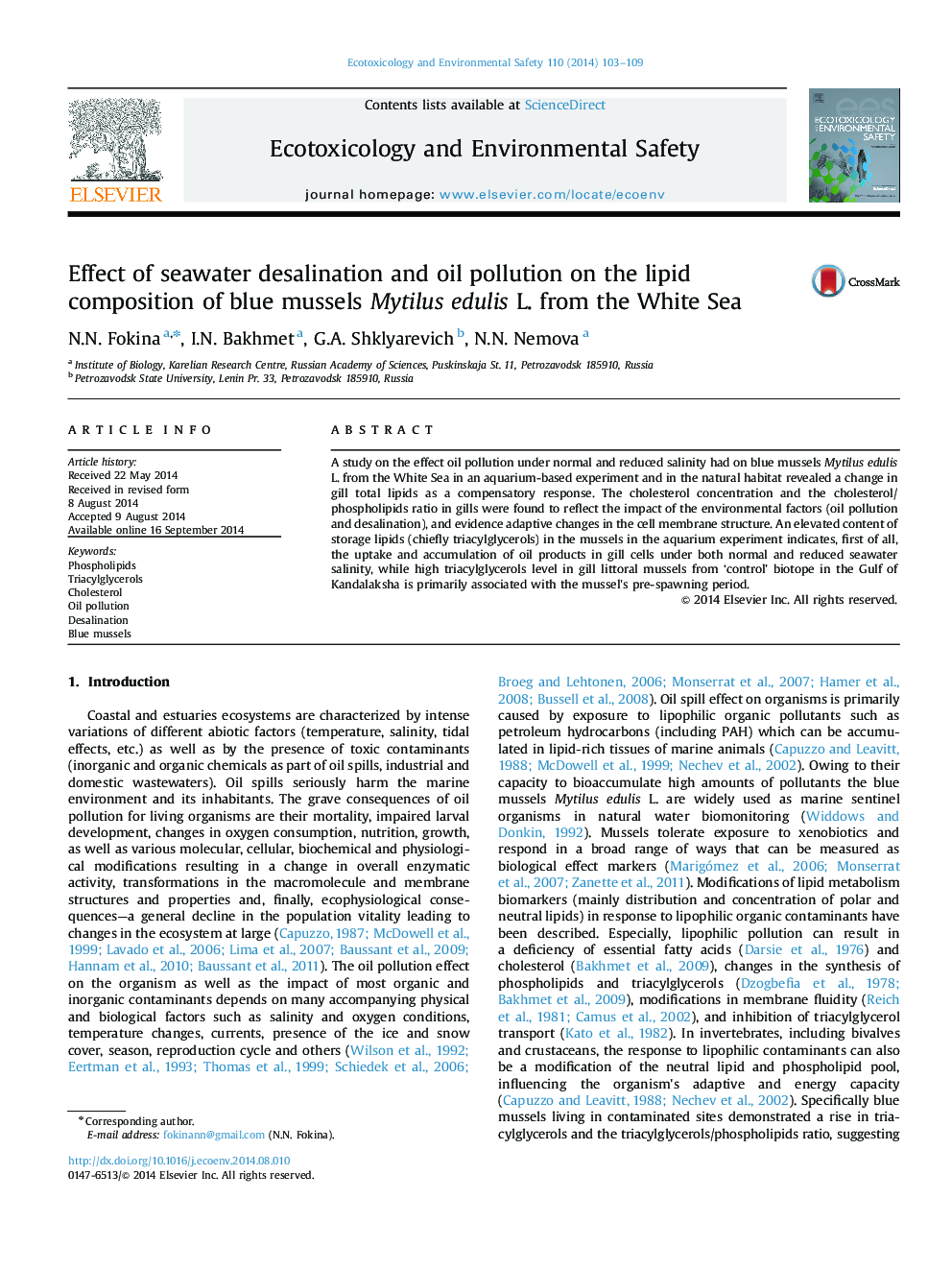| Article ID | Journal | Published Year | Pages | File Type |
|---|---|---|---|---|
| 4419905 | Ecotoxicology and Environmental Safety | 2014 | 7 Pages |
•Lipid content of blue mussels reflects the oil pollution and low salinity impact.•Changes of cholesterol/phospholipids ratio assume shifts in the gill membranes.•Increased TAG and phospholipids levels presume oil accumulation in the gills.
A study on the effect oil pollution under normal and reduced salinity had on blue mussels Mytilus edulis L. from the White Sea in an aquarium-based experiment and in the natural habitat revealed a change in gill total lipids as a compensatory response. The cholesterol concentration and the cholesterol/phospholipids ratio in gills were found to reflect the impact of the environmental factors (oil pollution and desalination), and evidence adaptive changes in the cell membrane structure. An elevated content of storage lipids (chiefly triacylglycerols) in the mussels in the aquarium experiment indicates, first of all, the uptake and accumulation of oil products in gill cells under both normal and reduced seawater salinity, while high triacylglycerols level in gill littoral mussels from ‘control’ biotope in the Gulf of Kandalaksha is primarily associated with the mussel׳s pre-spawning period.
